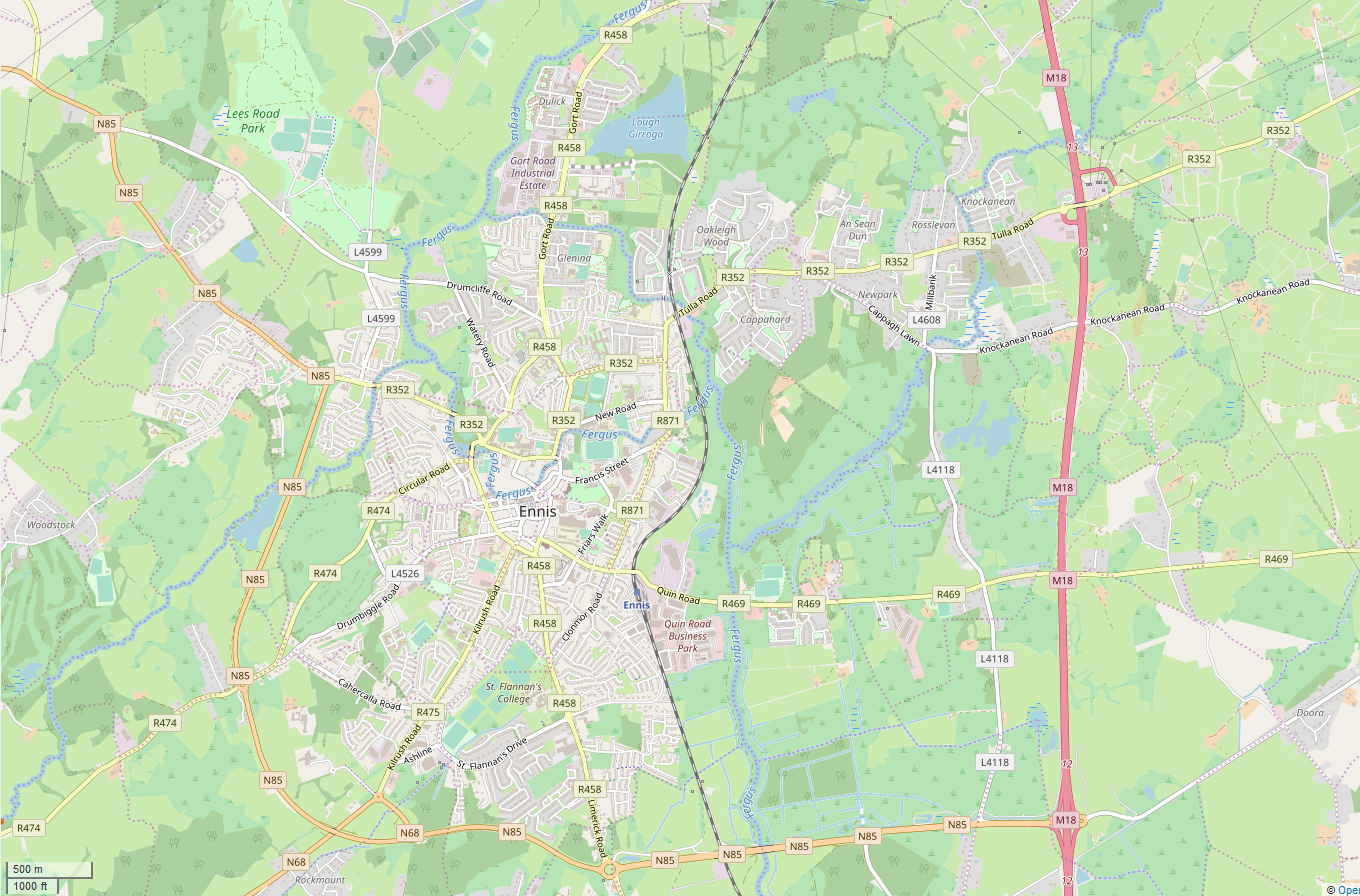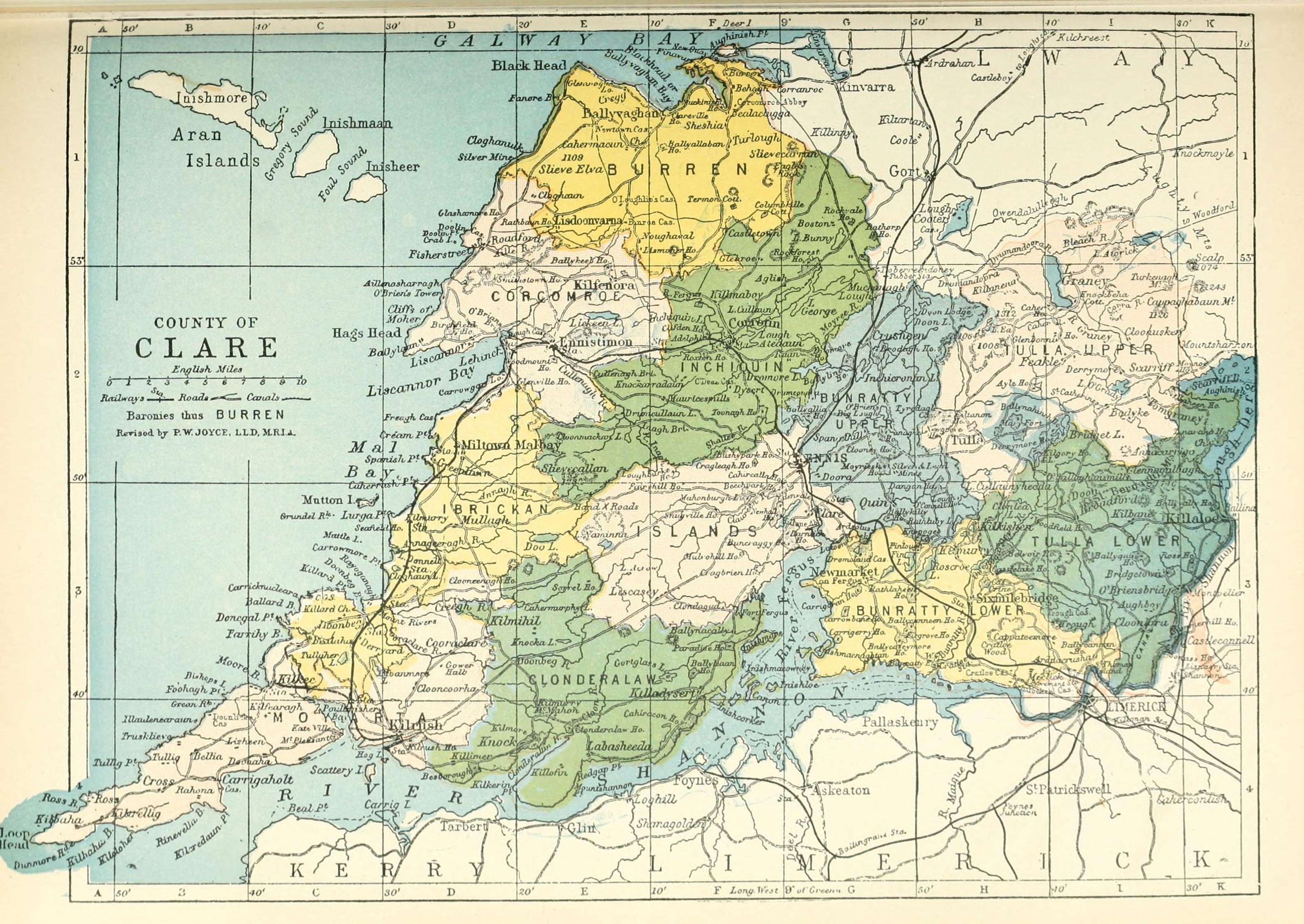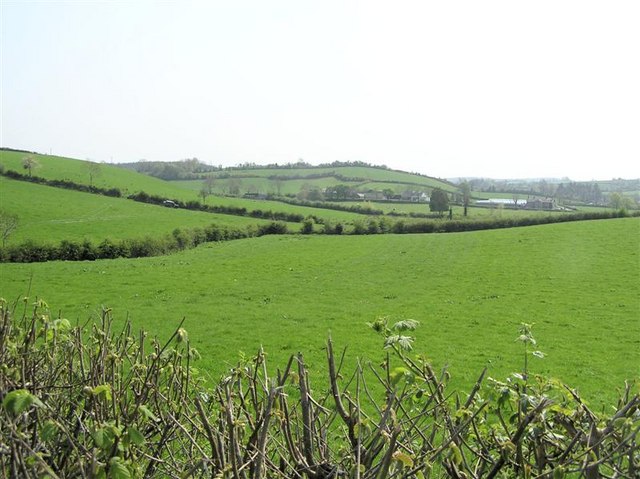|
Protestantism In The Republic Of Ireland
Protestantism in the Republic of Ireland refers to Protestantism in the Republic of Ireland and its predecessor, the Irish Free State. Protestants who are born in the Republic of Ireland are Irish Citizens. Protestants who are born in Northern Ireland are British and / or Irish depending on their political identity and whether they choose to exercise their right to claim Irish citizenship on the same basis as anywhere else on the island of Ireland (while there is a strong correlation between nationalism and nominal religion, with Protestants more likely to be pro-Union with the UK, this should not be overstated). In 2006, Protestants made up 4.2% of the Republic of Ireland's population versus 10% in 1911. Their population experienced a long period of decline over the 19th and 20th centuries, but slight growth in the 21st century. Decline before the Irish Free State The parts of Ireland where the number of Protestants were of higher proportion was closely related to the plantation ... [...More Info...] [...Related Items...] OR: [Wikipedia] [Google] [Baidu] |
Ireland Protestants 1861-1991
Ireland (, ; ; Ulster Scots dialect, Ulster-Scots: ) is an island in the North Atlantic Ocean, in Northwestern Europe. Geopolitically, the island is divided between the Republic of Ireland (officially Names of the Irish state, named Irelanda sovereign state covering five-sixths of the island) and Northern Ireland (part of the United Kingdomcovering the remaining sixth). It is separated from Great Britain to its east by the North Channel (Great Britain and Ireland), North Channel, the Irish Sea, and St George's Channel. Ireland is the List of islands of the British Isles, second-largest island of the British Isles, the List of European islands by area, third-largest in Europe, and the List of islands by area, twentieth-largest in the world. As of 2022, the Irish population analysis, population of the entire island is just over 7 million, with 5.1 million in the Republic of Ireland and 1.9 million in Northern Ireland, ranking it the List of European islands by population, ... [...More Info...] [...Related Items...] OR: [Wikipedia] [Google] [Baidu] |
Thomas Gilmartin
Thomas Patrick Gilmartin (18 May 1861 – 14 October 1939) was an Irish clergyman of the Roman Catholic Church. He served as Bishop of Clonfert from 1909 to 1918 and Archbishop of Tuam from 1918 to 1939. Life He was born in Castlebar, County Mayo, Ireland on 18 May 1861, the son of Michael Gilmartin, Rinshiona, Castlebar. He was educated at the Franciscan monastery boys school in Errew and at O'Dea's Academy in Castlebar. He attended St Jarlath's College in Tuam, and then St Patrick's College, Maynooth. Following his ordination to the priesthood in 1883, he became a professor of mathematics and natural science at St Jarlath's. In 1891, Gilmartin served as Dean of Formation and Vice-President of St Patrick's College, Maynooth. He was awarded a Doctor of Divinity by Rome in 1905. He was appointed the Bishop of the Diocese of Clonfert by the Holy See on 3 July 1909 and was consecrated on 13 February 1910 by the Most Reverend John Healy, Archbishop of Tuam. On the death o ... [...More Info...] [...Related Items...] OR: [Wikipedia] [Google] [Baidu] |
Church Of Ireland
The Church of Ireland (, ; , ) is a Christian church in Ireland, and an autonomy, autonomous province of the Anglican Communion. It is organised on an all-Ireland basis and is the Christianity in Ireland, second-largest Christian church on the island after the Catholic Church in Ireland, Roman Catholic Church. Like other Anglican churches, it has retained elements of pre-Reformation practice, notably its episcopal polity, while rejecting the papal primacy, primacy of the pope. In theological and liturgical matters, it incorporates many principles of the Reformation, particularly those of the English Reformation, but self-identifies as being both Protestantism, Reformed and Catholicity, Catholic, in that it sees itself as the inheritor of a continuous tradition going back to the founding of Celtic Christianity, Christianity in Ireland. As with other members of the global Anglican communion, individual parishes accommodate differing approaches to the level of ritual and formality ... [...More Info...] [...Related Items...] OR: [Wikipedia] [Google] [Baidu] |
Dermot Dunne
Dermot Patrick Martin Dunne is the current and, by some counts, 35th Dean of Christ Church Cathedral, Dublin. Early life and education A native of Mallow, Dean Dunne was born in 1959 and educated in philosophy and theology at St Patrick's College Maynooth, was ordained a deacon in 1983 and a priest in 1984, serving his early priestly ministry in the Roman Catholic Diocese of Cloyne, Fr. Dunne taught Religion in CBS Charleville. Later he was appointed chaplain to the Whittington Hospital in London and worked in two parishes there including St. George's Cathedral, Southwark and while in London, the Dean pursued graduate and post-graduate studies in psychotherapy and qualified as a psychotherapist in 1995. While studying psychotherapy at the Chiron Centre he met his wife Celia, and he left the ministry, and they married in a Church of England ceremony in 1996. After studying at the Church of Ireland Theological Institute he was licensed by the Church of Ireland priest in 1998. ... [...More Info...] [...Related Items...] OR: [Wikipedia] [Google] [Baidu] |
Dean Of Christ Church Cathedral, Dublin
The Dean of Christ Church Cathedral, Dublin is dean and head of the chapter of the Cathedral of the Holy Trinity, commonly called Christ Church Cathedral, which is the cathedral church of the United Diocese of Dublin and Glendalough in the Church of Ireland. The dean is appointed by the Church of Ireland Archbishop of Dublin. Aspects of the cathedral administration are overseen by the Cathedral Board, which the Dean chairs with both a regular and a casting vote. The Prior of Christ Church or Prior of the Holy Trinity was the predecessor of the office of dean. As part the dissolution of the Irish monasteries, the Arrosian abbey attached to the cathedral — the Priory of the Holy Trinity founded by archbishop Laurence O'Toole — was dissolved and its canons became officers of the new cathedral chapter, by Royal Warrant of 12 December 1539. From the Williamite Revolution until 1846, the Deanship of Christ Church ( endowment £5200) was held ''in commendam'' by the Bish ... [...More Info...] [...Related Items...] OR: [Wikipedia] [Google] [Baidu] |
Ennis, County Clare
Ennis ( , meaning 'island' or 'river meadow') is the county town of County Clare, in the mid-west of Ireland. The town lies on the River Fergus, north of where the river widens and enters the Shannon Estuary. Ennis is the largest town in County Clare, with a population of 27,923, making it the 6th largest town, and 11th largest urban settlement, as of the 2022 census. Dating from the 12th century the town's Irish name is short for , deriving from its location between two courses of the River Fergus. Ennis has had considerable success in the Irish Tidy Towns competition. In 2005 and 2021, the town was named Ireland's tidiest town, and was named Ireland's tidiest large urban centre on multiple occasions. The town straddles two baronies. Most of the town, including its historic centre, is in the Barony of Islands. However, the eastern and north-eastern edges of the town are in the Barony of Bunratty Upper. History The name Ennis derives from the Irish word "Inis", meaning ... [...More Info...] [...Related Items...] OR: [Wikipedia] [Google] [Baidu] |
County Clare
County Clare () is a Counties of Ireland, county in the Provinces of Ireland, province of Munster in the Southern Region, Ireland, Southern part of Republic of Ireland, Ireland, bordered on the west by the Atlantic Ocean. Clare County Council is the Local government in the Republic of Ireland, local authority. The county had a population of 127,938 at the 2022 census of Ireland, 2022 census. The county seat and largest settlement is Ennis. Etymology There are two main hypotheses for the origins of the county name "Clare". One is that the name is derived from Thomas de Clare, Lord of Thomond, Thomas de Clare an Anglo-Norman peer and soldier from the de Clare family, who was deeply embroiled in local politics and fighting in the 1270s and 1280 and had had acquired land in Kilkenny and Thomond that included the Castle of Clare. In 1590 County Clare was named after the castle, which is in a strategic location. An alternative hypothesis is that the county name ''Clare'' comes from ... [...More Info...] [...Related Items...] OR: [Wikipedia] [Google] [Baidu] |
Protestantism In Northern Ireland
Ulster Protestants are an ethnoreligious group in the Irish province of Ulster, where they make up about 43.5% of the population. Most Ulster Protestants are descendants of settlers who arrived from Britain in the early 17th century Ulster Plantation. This was the settlement of the Gaelic, Catholic province of Ulster by Scots and English speaking Protestants, mostly from the Scottish Lowlands and Northern England. Many more Scottish Protestant migrants arrived in Ulster in the late 17th century. Those who came from Scotland were mostly Presbyterians, while those from England were mostly Anglicans (see Church of Ireland). There is also a small Methodist community and the Methodist Church in Ireland dates to John Wesley's visit to Ulster in 1752. Although most Ulster Protestants descend from Lowland Scottish people (some of whose descendants consider themselves Ulster Scots), many descend from English, and to a lesser extent, from Irish, Welsh and Huguenots. Since the 17t ... [...More Info...] [...Related Items...] OR: [Wikipedia] [Google] [Baidu] |
County Monaghan
County Monaghan ( ; ) is a Counties of Ireland, county in Ireland. It is in the Provinces of Ireland, province of Ulster and is part of Border Region, Border strategic planning area of the Northern and Western Region. It is named after the town of Monaghan. Monaghan County Council is the Local government in the Republic of Ireland, local authority for the county. The population of the county was 65,288, according to the 2022 census. The county has existed since 1585 when the Mac Mathghamhna rulers of Airgíalla agreed to join the Kingdom of Ireland. Following the 20th-century Irish War of Independence and the signing of the Anglo-Irish Treaty, Monaghan was one of three Ulster counties to join the Irish Free State rather than Northern Ireland. Geography and subdivisions County Monaghan is the fifth-smallest of the Republic's 26 counties by area, and the fourth smallest by population. It is the smallest of Ulster's nine counties in terms of population. Baronies * Cremorne (ba ... [...More Info...] [...Related Items...] OR: [Wikipedia] [Google] [Baidu] |
County Donegal
County Donegal ( ; ) is a Counties of Ireland, county of the Republic of Ireland. It is in the Provinces of Ireland, province of Ulster and is the northernmost county of Ireland. The county mostly borders Northern Ireland, sharing only a small border with the rest of the Republic. It is named after the town of Donegal (town), Donegal in the south of the county. It has also been known as County Tyrconnell or Tirconaill (), after Tyrconnell, the historical territory on which it was based. Donegal County Council is the local government in the Republic of Ireland, local council and Lifford is the county town. The population was 167,084 at the 2022 census of Ireland, 2022 census. Name County Donegal is named after the town of Donegal (town), Donegal () in the south of the county. It has also been known by the alternative name County Tyrconnell or Tirconaill (, meaning 'Land of Conall Gulban, Conall'). The latter was its official name between 1922 and 1927. This is in reference to th ... [...More Info...] [...Related Items...] OR: [Wikipedia] [Google] [Baidu] |
County Cavan
County Cavan ( ; ) is a Counties of Ireland, county in Republic of Ireland, Ireland. It is in the Provinces of Ireland, province of Ulster and is part of the Northern and Western Region. It is named after the town of Cavan and is based on the historic Gaelic Ireland, Gaelic territory of East Breifne, East Breffny (''Bréifne''). Cavan County Council is the Local government in the Republic of Ireland, local authority for the county, which had a population of 81,704 at the 2022 census. Geography Cavan borders six counties: County Leitrim, Leitrim to the west, County Fermanagh, Fermanagh to the north, County Monaghan, Monaghan to the north-east, County Meath, Meath to the south-east, County Longford, Longford to the south-west and County Westmeath, Westmeath to the south. Cavan shares a border with County Fermanagh in Northern Ireland. Cavan is the 19th largest of the 32 counties in area and the 25th largest by population. The county is part of the Northern and Western Region, a ... [...More Info...] [...Related Items...] OR: [Wikipedia] [Google] [Baidu] |
Ulster Unionist Council
The Ulster Unionist Party (UUP) is a unionist political party in Northern Ireland. The party was founded as the Ulster Unionist Council in 1905, emerging from the Irish Unionist Alliance in Ulster. Under Edward Carson, it led unionist opposition to the Irish Home Rule movement. Following the partition of Ireland, it was the governing party of Northern Ireland between 1921 and 1972. It was supported by most unionist voters throughout the conflict known as the Troubles, during which time it was often referred to as the Official Unionist Party (OUP). Under David Trimble, the party helped negotiate the Good Friday Agreement of 1998, which ended the conflict. Trimble served as the first First Minister of Northern Ireland from 1998 to 2002. However, it was overtaken as the largest unionist party in 2003 by the Democratic Unionist Party (DUP). As of 2022 it is the fourth-largest party in the Northern Ireland Assembly, after Sinn Féin, the DUP, and the Alliance Party. Since Augus ... [...More Info...] [...Related Items...] OR: [Wikipedia] [Google] [Baidu] |







